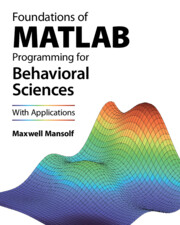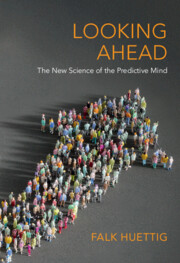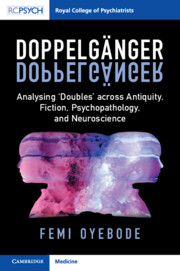Refine search
Actions for selected content:
194 results

Foundations of MATLAB Programming for Behavioral Sciences
- With Applications
- Coming soon
-
- Expected online publication date:
- September 2025
- Print publication:
- 07 August 2025
-
- Textbook
- Export citation
9 - Hip-Hop and Mental Health
- from Part III - Applications of Rap
-
-
- Book:
- The Cambridge Companion to Global Rap
- Published online:
- 25 July 2025
- Print publication:
- 14 August 2025, pp 144-157
-
- Chapter
- Export citation

Catatonia
- A Practical Guide to a Clinical and Scientific Conundrum
-
- Published online:
- 26 July 2025
- Print publication:
- 14 August 2025
Chapter 6 - Neuroscience and Compassion
- from Part I - Compassion in Healthcare
-
- Book:
- Handbook of Compassion in Healthcare
- Published online:
- 27 June 2025
- Print publication:
- 17 July 2025, pp 52-59
-
- Chapter
-
- You have access
- Open access
- HTML
- Export citation
Chapter 7 - Multidisciplinarity in Psychiatry
- from Part II - The Present and the Future
-
-
- Book:
- Values in Psychiatry
- Published online:
- 24 June 2025
- Print publication:
- 10 July 2025, pp 106-123
-
- Chapter
- Export citation
Chapter 4 - Ailments of the Mind?
- from Part II - The Present and the Future
-
-
- Book:
- Values in Psychiatry
- Published online:
- 24 June 2025
- Print publication:
- 10 July 2025, pp 55-81
-
- Chapter
- Export citation
Chapter 10 - More on the Current Climate in Psychiatry
- from Part II - The Present and the Future
-
-
- Book:
- Values in Psychiatry
- Published online:
- 24 June 2025
- Print publication:
- 10 July 2025, pp 139-156
-
- Chapter
- Export citation
11 - Functional Anatomy of Basal Ganglia Disorders
-
- Book:
- Disorderly Movements
- Published online:
- 17 May 2025
- Print publication:
- 05 June 2025, pp 193-206
-
- Chapter
- Export citation
Prologue
-
- Book:
- Disorderly Movements
- Published online:
- 17 May 2025
- Print publication:
- 05 June 2025, pp 1-10
-
- Chapter
- Export citation
Chapter 18 - Depression
- from Part Four - How Music Helps with Illness
-
- Book:
- Good Vibrations
- Published online:
- 01 May 2025
- Print publication:
- 22 May 2025, pp 287-299
-
- Chapter
- Export citation
Introduction
-
- Book:
- Good Vibrations
- Published online:
- 01 May 2025
- Print publication:
- 22 May 2025, pp 1-6
-
- Chapter
-
- You have access
- HTML
- Export citation
Efficacy and safety of a 4-week course of repeated subcutaneous ketamine injections for treatment-resistant depression (KADS study): randomised double-blind active-controlled trial: commentary, author response
-
- Journal:
- The British Journal of Psychiatry / Volume 226 / Issue 5 / May 2025
- Published online by Cambridge University Press:
- 27 May 2025, pp. 317-318
- Print publication:
- May 2025
-
- Article
- Export citation
Chapter Two - Methods of Cognitive Neuroscience
-
- Book:
- The Neuroscience of Language
- Published online:
- 17 April 2025
- Print publication:
- 10 April 2025, pp 16-41
-
- Chapter
- Export citation
Chapter Three - A Structural Foundation
-
- Book:
- The Neuroscience of Language
- Published online:
- 17 April 2025
- Print publication:
- 10 April 2025, pp 42-69
-
- Chapter
- Export citation
Chapter Ten - Language as a Whole-Brain Enterprise
-
- Book:
- The Neuroscience of Language
- Published online:
- 17 April 2025
- Print publication:
- 10 April 2025, pp 216-237
-
- Chapter
- Export citation
Chapter 8 - The Courage to Decide
-
- Book:
- Essentials of Social and Emotional Intelligences
- Published online:
- 25 March 2025
- Print publication:
- 27 March 2025, pp 168-192
-
- Chapter
- Export citation

Looking Ahead
- The New Science of the Predictive Mind
-
- Published online:
- 20 March 2025
- Print publication:
- 06 March 2025
Chapter 8 - Neurophilosophy
-
-
- Book:
- Essential Neuroscience for Psychiatrists
- Published online:
- 12 March 2025
- Print publication:
- 20 March 2025, pp 260-282
-
- Chapter
- Export citation
Chapter 8 - The Double in Neuroscience
-
- Book:
- Doppelgänger
- Published online:
- 13 March 2025
- Print publication:
- 20 March 2025, pp 142-151
-
- Chapter
- Export citation

Doppelgänger
- Analysing ‘Doubles' across Antiquity, Fiction, Psychopathology, and Neuroscience
-
- Published online:
- 13 March 2025
- Print publication:
- 20 March 2025
